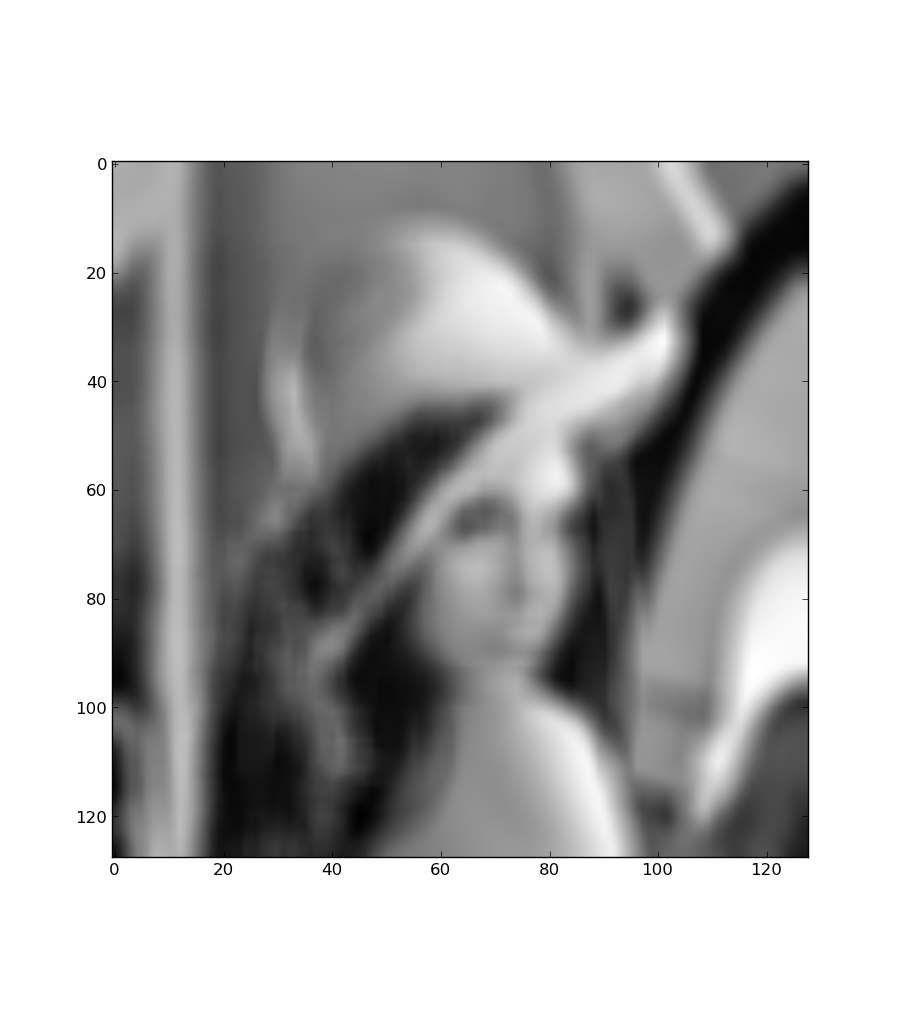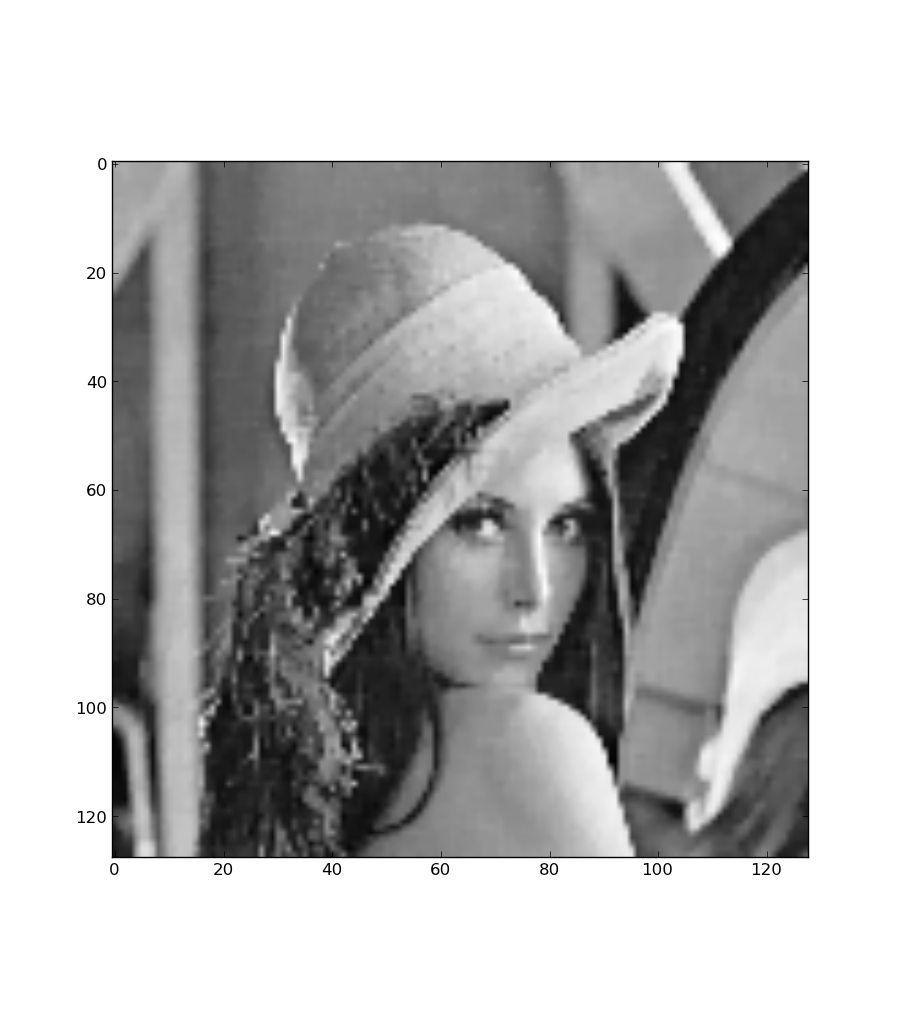Deconvolution with the double loop inference algorithm
The following exemple can be found in the exemples directory . It illustrates the performances of an unsupervised algorithm derived in Seeger et al. 2010 . The algorithm itself is coded in iterative/dli.py
For this exemple Lena has been convolved with an uniform kernel of ones of size 7 times 7. The original image has been downsampled by a factor 4 for speed. In addition, there is noise white noise added to the date too. #!/usr/bin/env python
import numpy as np
import scipy
import linear_operators as lo
# Load the infamous Lena image from scipy
im = scipy.lena()
im = im[::4, ::4]
# Generate a convolution model with a 7x7 uniform kernel
model = lo.convolve_ndimage(im.shape, np.ones((7, 7)))
# convolve the original image
data = model * im.ravel()
# add noise to the convolved data
data += 1e0 * np.random.randn(*data.shape)
# define smoothness prior

